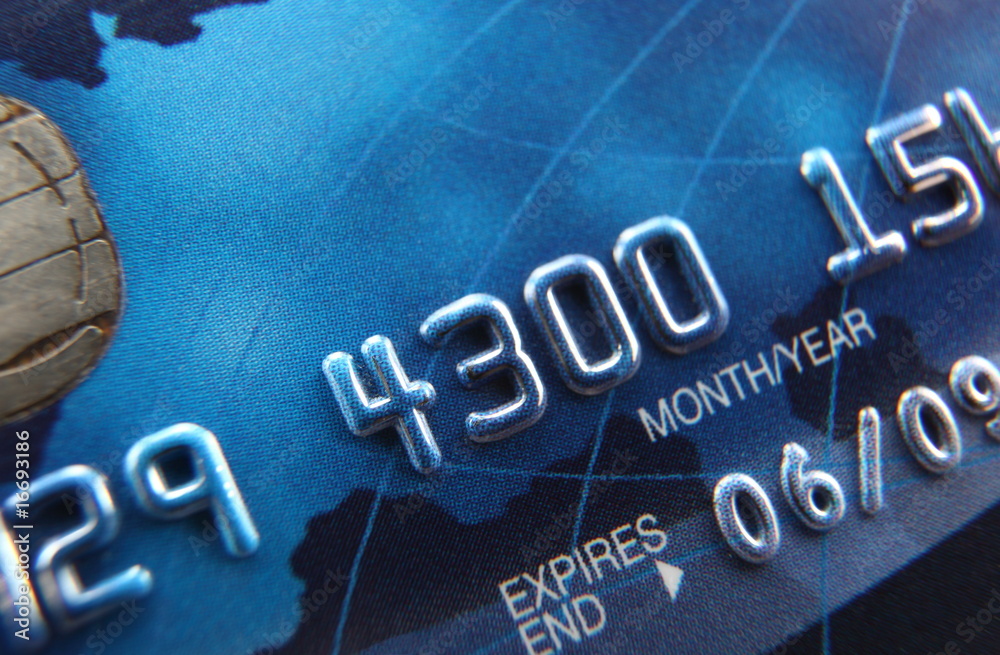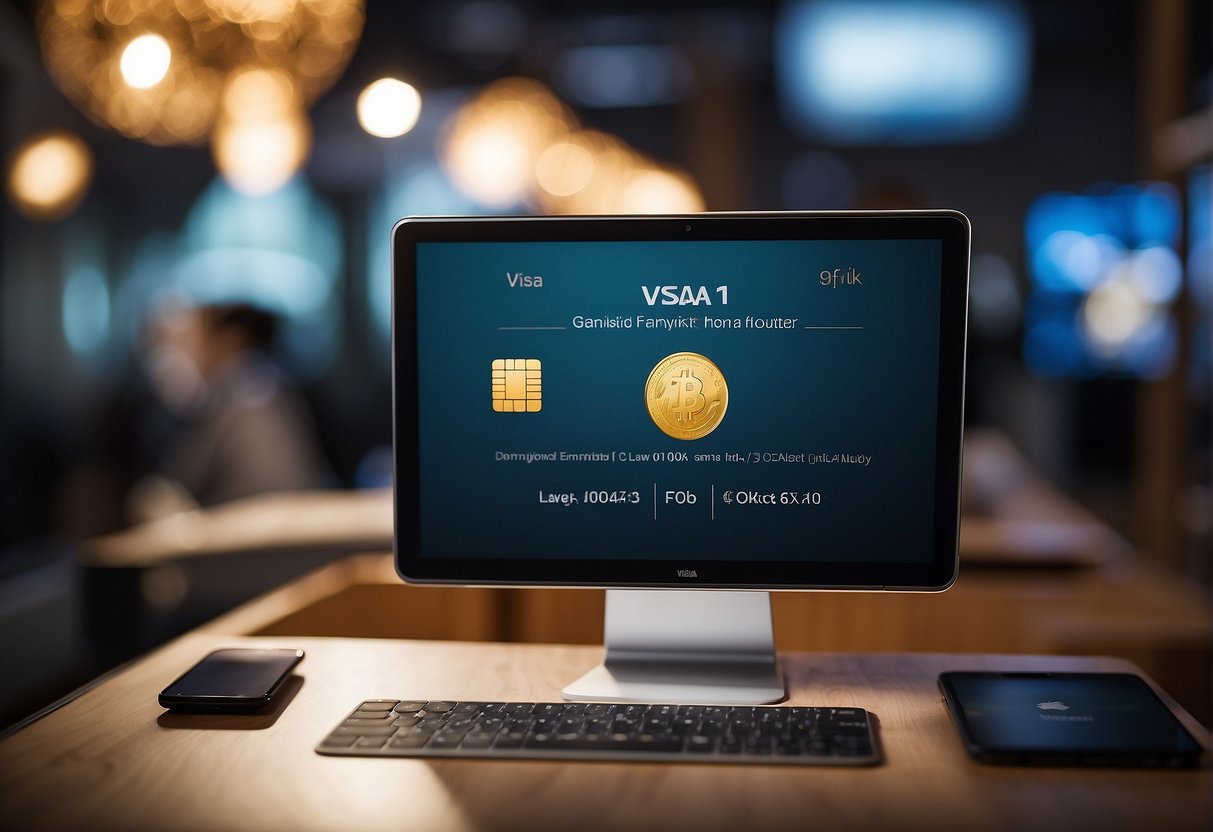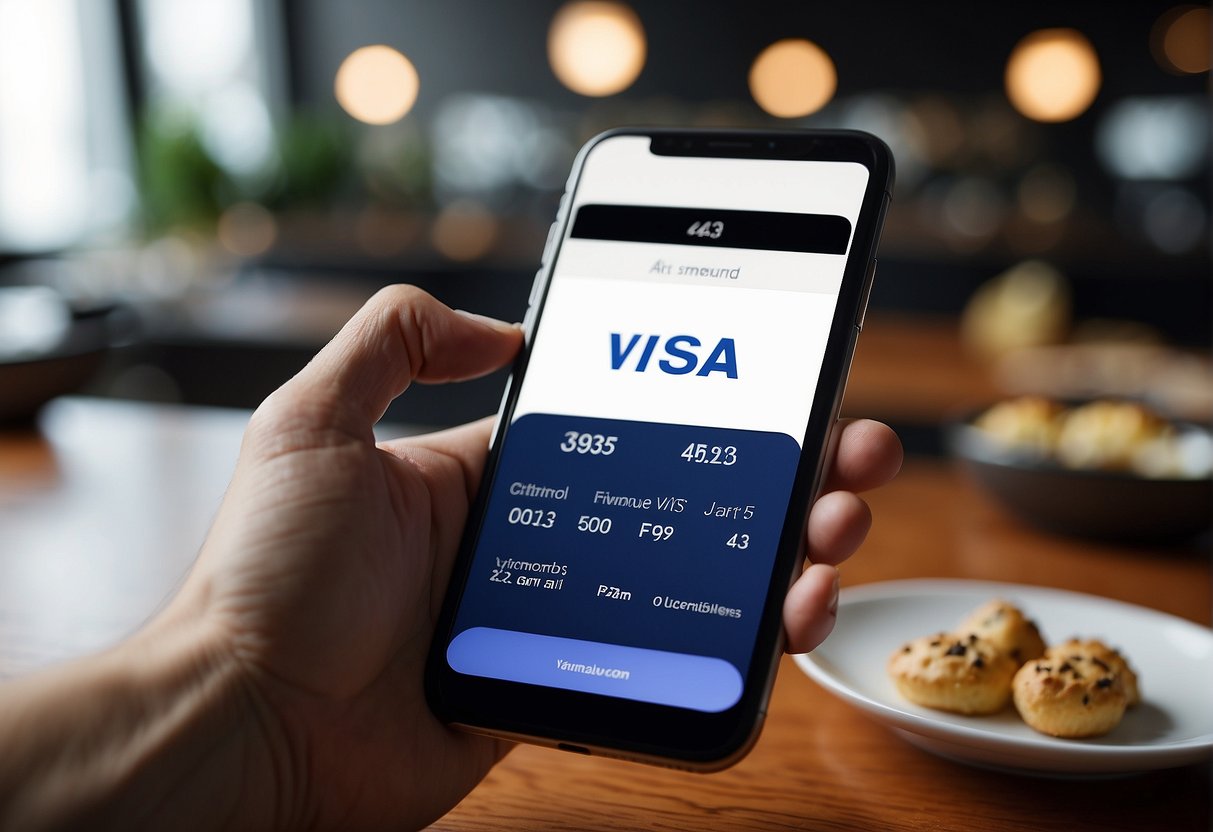In a significant stride towards the future of digital engagement, Visa has announced the launch of its Visa Web3 Loyalty Engagement Solution. This innovative service marks the financial giant’s foray into the rapidly expanding domain of Web3, promising to redefine how brands cultivate customer loyalty. Visa’s strategy leverages the intrinsic benefits of blockchain technology, offering a platform where businesses can create more interactive and rewarding experiences for their customers through gamification and digital collectibles.

The move underscores the belief that the intersection of payment services and digital innovation can foster unparalleled loyalty programs and customer engagement strategies. With their new Web3 loyalty solutions, brands can now augment their rewards infrastructure to operate in digital and virtual environments—a space where customers are increasingly spending more time and expecting more personalized and engaging interactions.
Visa’s commitment to embracing Web3 technologies demonstrates their recognition of the shifting landscapes of both customer expectations and the potential of decentralized platforms. The approach is not to replace traditional loyalty systems but to enhance them, facilitating a seamless experience that could integrate with virtual, digital, and real-life experiences. This integration promises to open up new avenues for user interaction, powered by a secure and user-centric Web3 framework.
Visa’s Strategic Move

Visa is redefining the landscape of customer loyalty by integrating Web3 technologies into its reward systems, showcasing a pioneering leap to gamify the consumer experience and offer unique digital assets.
Overview of Web3
Web3 represents the third generation of internet services for websites and applications, focusing on decentralization and leveraging blockchain technology. It offers new capabilities for companies like Visa to create dynamic and highly engaging loyalty programs. These programs capitalize on digital collectibles and assets, which can provide personalized and potentially more valuable rewards for customers.
Shift Towards Digital Engagement
Visa has announced the launch of the Visa Web3 Loyalty Engagement Solution, indicating a significant shift towards digital engagement strategies. This solution allows brands to offer gamified rewards which include immersive augmented reality experiences and exclusive digital collectibles, enhancing the way customers interact with rewards programs. Such strategies reflect Visa’s move to adapt to the changing digital landscape where digital-first experiences are becoming increasingly important.
Gamification of Rewards

In the evolving landscape of customer engagement, Visa has introduced a novel approach to loyalty programs: the integration of gamified rewards and digital collectibles, enhancing user experience and interaction.
Elements of Gamification
Gamification employs game-design elements in non-game contexts to increase participation and motivate consumers. Key elements include:
- Points: Users earn points for completing certain actions or purchases.
- Badges: Customers collect badges as a status symbol or as milestones within the loyalty program.
- Leaderboards: Rankings encourage a competitive spirit amongst participants.
- Challenges: Tasks or goals are set for users to achieve and earn rewards.
- Rewards: They may be in the form of tokens or digital collectibles, which can be redeemed later or collected as part of the engagement process.
Benefits of Gamified Loyalty Programs
Gamified loyalty programs offer considerable advantages to both the brand and the consumer:
- Increased Engagement: Gamification makes participation in loyalty programs more enjoyable, leading to increased customer activity.
- Personalization: These programs can be tailored to consumer behaviors, providing a unique experience.
- Data Collection: As users interact with the gamified system, valuable consumer data can be gathered and used to refine marketing strategies.
- Customer Retention: By creating a more interactive and rewarding experience, customers are more likely to remain loyal to the brand.
- Brand Differentiation: A gamified loyalty approach sets a brand apart from competitors by offering a unique customer experience.
Digital Collectibles as Rewards

Visa recently introduced a way to redefine customer engagement by integrating digital collectibles into its loyalty program, which suggests a significant shift in how rewards are offered and conceptualized.
Rise of Digital Collectibles in Loyalty Programs
Companies have begun to replace traditional loyalty rewards with digital collectibles—unique digital assets based on blockchain technology. These collectibles are not mere static tokens; they represent a fusion of brand-related artwork, utility, and experiences. Visa’s initiative to gamify rewards is a testament to the growing interest in offering something beyond conventional point systems and discount coupons.
Advantages for Consumers
Customers stand to gain various advantages from the introduction of digital collectibles as part of reward programs:
- Personalization: Collectibles can be tailored to reflect the consumer’s interactions and preferences, offering a more personalized reward.
- Exclusivity: Owning a unique asset enhances the feeling of exclusivity and value for the consumer.
- Portability: As digital assets, these collectibles can be stored, showcased, or even traded in digital spaces, making them conveniently portable.
- Durability: Unlike physical rewards, digital collectibles are not subject to wear and tear and could potentially offer lasting value.
Implementing Blockchain Technology

Visa’s innovative approach integrates blockchain technology to elevate customer loyalty programs, ensuring secure and transparent transactions for end-users.
Blockchain in Loyalty Programs
Blockchain technology has been adeptly utilized by Visa to reinvent customer loyalty schemes. The newly introduced Visa Web3 Loyalty Engagement Solution exploits blockchain’s capabilities for creating a more engaging and interactive reward system. Through this platform, consumers can earn and redeem tokens, supported by gamified augmented reality (AR) and spatial experiences. Blockchain’s inherent properties allow for these transactions to be both transparent and immutable.
Enhancing Security and Transparency
In the realm of digital payments, security is paramount. Visa’s Web3 loyalty platform leverages blockchain technology to offer enhanced security features. Every transaction on the blockchain is encrypted and logged in a tamper-resistant ledger. This transparency allows consumers to see the detailed history of their Loyalty Engagement activities, establishing trust and accountability, which are crucial in building customer loyalty.
Visa’s Partnerships and Collaborations

Visa has ventured into the Web3 space by forming strategic partnerships that reinforce its commitment to innovation in customer loyalty programs and engagement.
Strategic Alliances
Visa teamed up with SmartMedia Technologies to develop a Web3 Loyalty Engagement Solution. This alliance integrates Visa’s vast payment network with the technical expertise of SmartMedia, providing a platform for brands to offer more engaging and interactive customer rewards through digital collectibles and gamified experiences.
Industry Impact
The collaborations Visa has established are poised to set new standards in the digital payments industry. By embracing Web3 and its underlying principles, Visa is not only enhancing how rewards are delivered and experienced but is also influencing peers and partners to consider new, innovative methods of customer engagement. This ripple effect reinforces Visa’s role as both a leader and innovator in the financial sector.
Future Prospects
As Visa enters the Web3 space with its various loyalty programs, it sets the stage for a transformation in how businesses engage with their consumers. These initiatives are a vote of confidence in decentralized technology and its potential to reshape loyalty programs.
Potential Market Growth
The integration of Web3 by Visa indicates a significant potential for market growth in the loyalty sector. By leveraging blockchain technology, Visa’s solution could expand the loyalty market by enabling safe, immutable, and more engaging reward systems. The decentralized nature of Web3 may result in reduced costs and increased efficiency, offering businesses new avenues for customer loyalty and retention.
Evolving Consumer Trends
Consumer expectations are changing rapidly, and Visa’s rollout caters to these evolving trends. Utilizing gamified rewards and digital collectibles, Visa aims to attract a tech-savvy audience that values interactive and immersive experiences. As consumers become more comfortable with digital assets and decentralized applications, Visa’s Web3 loyalty programs could become integral to how brands cultivate loyalty and create personalized customer experiences.
Challenges and Considerations

In this section, we’ll explore specific obstacles Visa faces with its Web3 Loyalty Engagement Solution, particularly navigating Regulatory Hurdles and addressing Consumer Privacy Concerns.
Regulatory Hurdles
Visa’s foray into Web3 with gamified rewards presents significant regulatory challenges. Governments worldwide are still catching up with the regulatory implications of Web3 and digital currencies. Visa must operate within an uncertain legal framework, which may differ drastically across jurisdictions. This lack of regulatory clarity can impact how rewards are classified – whether as securities, digital assets, or a new category altogether – affecting the implementation of their loyalty program.
Consumer Privacy Concerns
Incorporating Web3 technologies introduces consumer privacy considerations, especially when dealing with digital collectibles and personalized experiences. Visa is tasked with ensuring the security of sensitive consumer data while also leveraging blockchain’s transparency. Consumers may be wary of how their data and spending habits are shared and monetized within decentralized platforms. Visa must maintain trust by implementing robust privacy protections and transparent data usage policies.
Frequently Asked Questions

Visa is leveraging Web3 technology to transform the loyalty rewards universe through innovative gamification and digital collectibles.
How is Visa integrating gamification into loyalty programs through Web3?
Visa is incorporating gamification elements such as augmented reality treasure hunts and interactive challenges into its Web3 Loyalty Engagement Solution. These initiatives are designed to engage consumers more deeply by providing an enriched digital experience.
What types of digital collectibles is Visa offering to enhance customer rewards?
Visa’s solution includes digital collectibles that can range from redeemable tokens to exclusive digital art and personalizable avatars, all of which can be interacted with in various ways, including in augmented reality.
Can Visa’s Web3 loyalty rewards be traded or sold within the ecosystem?
While the primary function of Visa’s loyalty rewards is customer engagement and retention, the tradeability and sale of these digital assets will depend on the individual terms provided by Visa and the participating brands.
What security measures does Visa have in place for its Web3-based rewards and collectibles?
To safeguard digital assets like crypto and NFTs in the loyalty program, Visa offers secure Web3 wallets. These wallets aim to provide a reliable way for consumers to manage their digital identity and assets safely.
How can consumers participate in Visa’s Web3 loyalty program with gamified rewards?
Consumers can participate by engaging with brand campaigns that are integrated with Visa’s Web3 Loyalty Engagement Solution. Through interactive activities, they can earn rewards which may include exclusive digital collectibles.
What impact will Visa’s entry into Web3 have on the traditional loyalty rewards landscape?
Visa’s entry into Web3 with a focus on gamified rewards signifies a shift towards digital-first experiences. It suggests a potential for broader adoption of blockchain technology in the loyalty sector, thus influencing how brands innovate their engagement strategies for digital-savvy consumers.
- AI in Retail: Transforming Customer Experience and Personalization Effortlessly

- Responsible AI Development: Ethical Adoption and Transparency

- AI and Creativity: The Fusion of Art, Music, and Machine Learning

- AI-Powered Chatbots in Customer Service

- Visa Bets on Web3 Loyalty

- AI is Eating Finance: How Banks are Embracing Large Language Models

